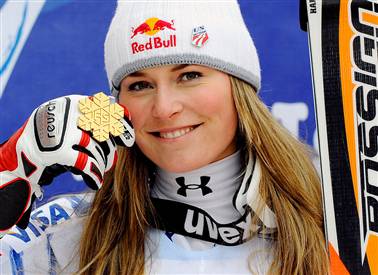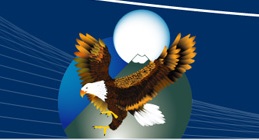Steeped in history, Wengen's Lauberhorn stands as ultimate downhill test
"There's a book in the other room," he points. "I look at it every time I come here. The photographs in there, well, they really tell the story. Wengen is a special place."
The Wengernalpbahn, a cog rail completed in 1892, serves as taxi to the auto-free Swiss village. It continues onto Kleine Scheidegg and over a pass to Grindelwald. Three of the most ominous peaks in Switzerland - the Jungfrau, Monch and Eiger - tower above.
It will be Nyman's sixth year of racing the Lauberhorn downhill, the oldest downhill in ski racing.
"The list of names who have won here is the history of ski racing," says Nyman. "But for me, I get my most inspiration when I think about the U.S. guys who have won here like Bill Johnson (1984), Daron Rahlves (2006) and Bode [Miller, Franconia, NH; 2007, 2008]. This race is a classic. When you win here, you've become a part of Wengen."
The same cog rail that drops the entire Audi FIS Alpine World Cup field and the thousands of skis and tons of luggage in Wengen also serves as the first chair lift. Special trains are added to the meticulous Swiss schedule on race day. Athletes exit at Kleine Sheidegg and load a lift to the start, 2.7 miles above the finish.
With average times of 2:30 seconds, the Lauberhorn is also the longest race on the World Cup circuit. The Swiss Air Force flies F5 Tiger fighters in acrobatic formation at noon each day.
"The first time I raced her, I could feel my legs burning halfway down," said Nyman. "Now I feel them at about three quarters. This hill takes it all out of you. You have to fight the urge to stand up and if you win that fight, you'll be in a good position to win the race."
The Wengen finish is tucked into a farm pasture just outside the village. It's small with room enough in the stands for a few thousand. In big years 30,000 have been known to flank the Lauberhorn from top to bottom with the highest concentration packed below the famous Hundschopf, a 130 foot leap through an rock outcropping.
Beyond that is Canadian Corner, a long fall-away curve named after the Crazy Canucks, who dominated Wengen in the early 1980's. Following the harrowing turn is the Kernen-S, a near 90 degree jog onto a tight ribbon of snow before peeling left into another 90. The hill then drops through the Wasserstation, a tunnel under the Wengernalpbahn. At times the train passes as racers rip below - all this in the first half of the run.
In the lower segement, skiers reach nearly 100 mph down the Haneggschuss, then soar off the Silberhornsprung and immediately into the Austrian Hole, a near two G compression. At this point, racers have been skiing for roughly 2:20. Above the finish is the Ziel-S or what U.S. coaches call stump alley.
"The three turns above the finish are probably the hardest on the slope, not because they're particularly technical, but because you're so cooked by that point. It's not easy to be dynamic on your skis and a lot of guys 'stump out' there because of fatigue. I've been one of them," said Nyman.
A top three finish is rewarded with a helicopter ride up the vertical face of the Eiger. It then swoops back and tracks up the Lauberhorn before plunging over the summit and down into town.
"I don't like to come all the way back from the finish, I like taking the helicopter," said Miller during Thursday night's super combined bib draw. "That's why it's really important to get on the podium here."
Miller won last year's super combined in Wengen, then went on to capture the Olympic super combined gold medal.
The downhill portion starts at 4:30 a.m. ET Friday with slalom at 8 a.m. on www.UniversalSports.com. Ted Ligety (Park City, UT) starts 14, Miller 21, Tim Jitloff (Reno, NV) 43 and Nyman 44.
Welcome to the 81st running of the Lauberhorn races in Wengen.
![]() 0 Comments on "Steeped in history, Wengen's Lauberhorn stands as ultimate downhill test"
0 Comments on "Steeped in history, Wengen's Lauberhorn stands as ultimate downhill test"
Be the first to comment below.



 Vail Town Council to weigh new plan to redevelop T...
Vail Town Council to weigh new plan to redevelop T...  All about indexes
All about indexes  Transforming your social security into a winning r...
Transforming your social security into a winning r...  Pass sales, real estate transactions, revenues inc...
Pass sales, real estate transactions, revenues inc...  Vail Valley native with passion for Biophilic inte...
Vail Valley native with passion for Biophilic inte...  Beaver Creek starts work on new summer activities
Beaver Creek starts work on new summer activities  Land Trust, ECO Trails, Vail Resorts team up to cl...
Land Trust, ECO Trails, Vail Resorts team up to cl...  EUROVISION named Host Broadcaster for 2015 World A...
EUROVISION named Host Broadcaster for 2015 World A...  Vail Resorts brings back Lindsey Vonn's 'School of...
Vail Resorts brings back Lindsey Vonn's 'School of...  Hundreds turn out for 2015 World Championships vol...
Hundreds turn out for 2015 World Championships vol...  Eagle County Senior Health Expo and 9th Annual Hea...
Eagle County Senior Health Expo and 9th Annual Hea...  Final race of Vail Mountain Trail Running Series s...
Final race of Vail Mountain Trail Running Series s...  Before you write your will ...
Before you write your will ...  2015 World Ski Championships volunteer recruitment...
2015 World Ski Championships volunteer recruitment...  Ascent Sotheby’s International Realty in Vail an...
Ascent Sotheby’s International Realty in Vail an...  CDOT outlines road closures for local stages of US...
CDOT outlines road closures for local stages of US...  Italian artist creates unique trophies for Vail, B...
Italian artist creates unique trophies for Vail, B...  Vail Recreation District once again hosting Jake W...
Vail Recreation District once again hosting Jake W... 

